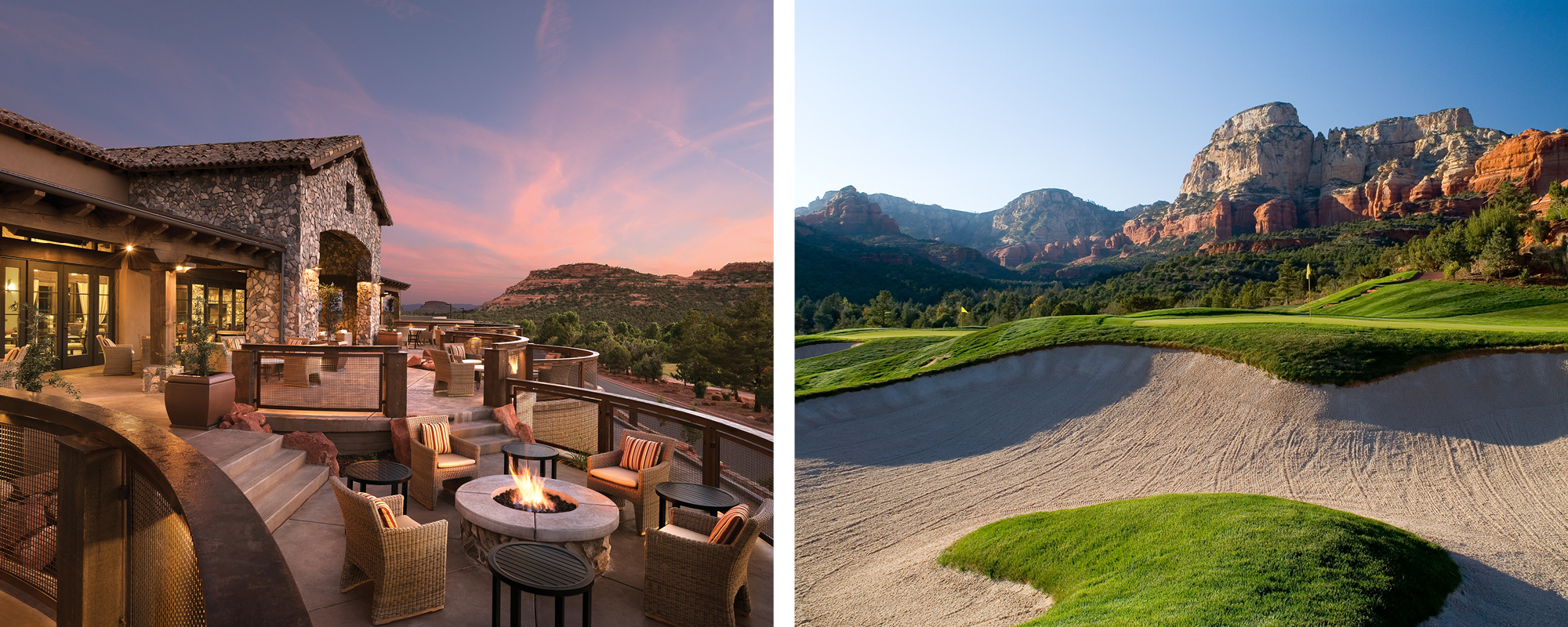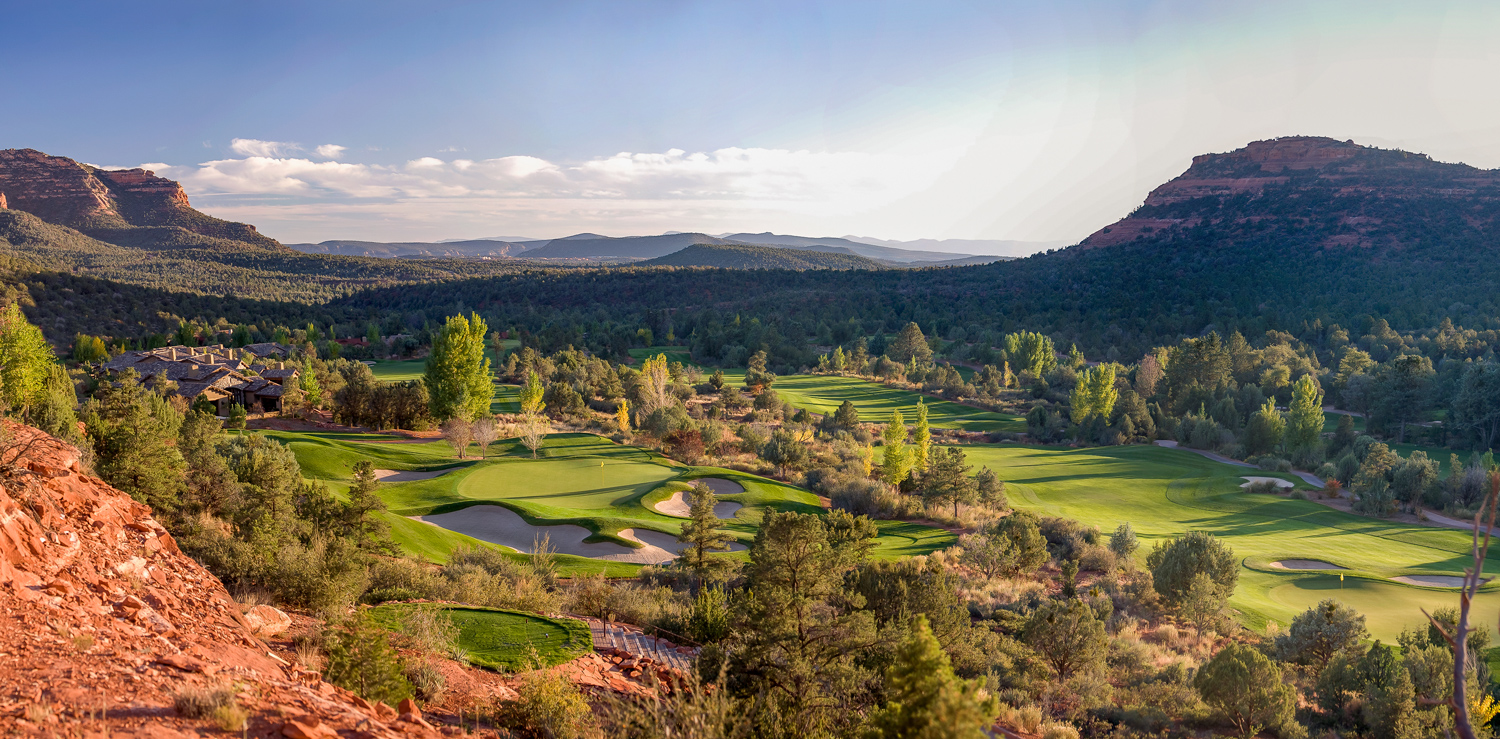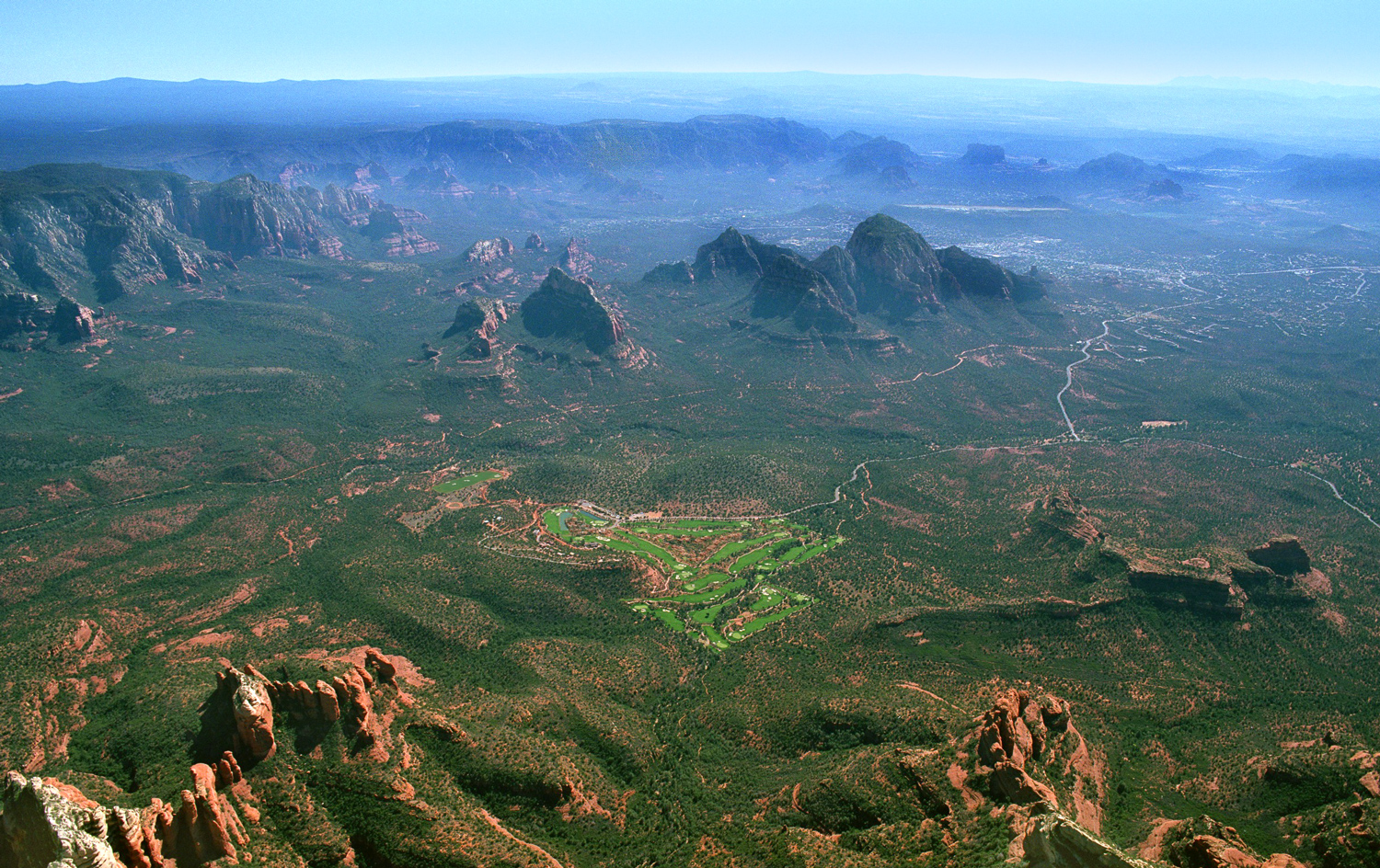
ust as many golf resorts and private clubs are doing all around the world, Seven Canyons in Sedona, Arizona, has added a short course to its repertoire. Unlike all of those other clubs and resorts, however, the seven-hole course that the club recently added is a secret. Except that it’s standing right in plain sight.
Don’t worry, we’ll explain.
The club recently invested sizable capital into a full, master plan renovation—one that included a complete bunker renovation, the re-leveling of many of the tee boxes, and a re-sequencing of the holes that flipped the two nines. As the club worked with architect Phil Smith, who originally partnered with the late Tom Weiskopf to design the course in 2002—more specifically, as the club and architect worked together to turn the 10th hole back into the first hole—they looked around the area of that first tee box and discovered a parcel of land that could support a practice putting surface, not to mention a green complex with run-off areas for chipping and pitch-shot practice. Moreover, as they looked around at the various tee boxes that supported other holes—all a short, flip wedge distance away—they realized they had the makings of a seven-hole short course that utilized a single green complex.
“Tom’s Secret 7,” explains David Bisbee, the club’s general manager, “is a series of shots from different tee boxes to a central flag at the center of that short-game practice green.”
With the addition of the Turn House in the works, the area is poised to become so much more than just a short-game practice area. As Bisbee acknowledges, it’s become an entirely new amenity at the club. “We turned it into a hangout spot for the members,” he says. “In fact, the settings for both the long and short game practice areas are remarkable. That’s why we call them practice parks.”
The club’s new short-game hangout space might be the most exciting aspect of the aforementioned renovation project—certainly as it pertains to future programming and fun member events—but the heavy lifting that transformed the almost 7,000-yard, championship-caliber golf course is no less noteworthy. “We installed brand-new, white, beautiful sand in the bunkers and returned all of the bunker lines back to their original shapes,” Smith explains. “That striking look of the beautiful green grass with the contrast of the white sand and those red rocks in the background is back.”

Equally significant is the change in routing, which allows the course to start as Weiskopf and Smith initially intended. According to Smith, the sequence of holes now has the best possible flow. “The front nine now begins with one of the most spectacular views on the golf course and is shorter than the back nine,” he says, “so players can get off to a nice start and ease into a strong finish.”
All of this was made possible by a new ownership group that’s comprised of existing members. As Smith explains, they’re now known as the New Seven Canyons Group, and in the architect’s estimation, that ownership group is just what the club needs. “They’re terrific,” he says. “They’re willing to put the resources in to do those necessary upgrades.
“I don’t care how great a golf course design you have,” he continues. “If it’s not maintained to its utmost potential, people are going to be disappointed. What you want to do is to create fair challenges and fair penalties, and conditioning and maintenance has so much to do with that.”

While the present-day chapter of Seven Canyons’ story is worth commendation, the club’s origin is no less noteworthy. According to Bisbee, Weiskopf had only spent 20 minutes on the property when he committed to the design project. Yet, ironically, it took the club’s developers much longer to convince him that he should even consider the site in the first place.
As Bisbee recalls, Weiskopf continually refused the invitation from the club’s developers to tour the site. The former British Open champion was solely using a topographical map to evaluate the approximately 55 acres that were earmarked for the course, and in the former tour player’s opinion, the site was too tight for him to build the playing corridors and green complexes to the size and scale that he wanted.
Eventually, the developer convinced Weiskopf’s associate, Smith, to make the trip. After a quick 30 minutes of surveying work, Smith promptly got in his car and drove to the nearest point of cell service to call his partner and tell him that he needed to see it in person. The club’s land—and the parcel now home to the golf course—was that special. In fact, Bisbee had the same reaction when he first laid eyes on the property back when he was working as an advisor to the developer. “I remember driving back and calling the future developer and saying, ‘I don’t know if it’s feasible or not, but I know it’s irreplaceable,’ he recalls. “There is no way you could do this today.”

As a way of explanation, Seven Canyons is, quite literally, surrounded by protected National Forest. For decades, perhaps even longer, the golf club’s acreage was owned by several homesteading families who worked the land as cattle ranchers. Eventually, all of those homesteading sites were cobbled together into a single, privately owned parcel, and in time, a ring of protected forest land took root around it.
By the time Weiskopf accepted the project, expeditiousness was of the essence. Given the land’s proximity to the National Forest, the developer was only granted so much time to utilize heavy equipment. Not only was that easement about to expire, but so, too, was the club’s water entitlements. That meant that Weiskopf and Smith couldn’t ease into the design phase of the project. They couldn’t utilize the CAD systems that they typically implemented as they began routing and conceptualizing individual holes. They had to do it the old-fashioned way.
“He did it on the ground, walking and sketching holes as he went,” Bisbee recalls of Weiskopf’s preliminary design efforts. In fact, Weiskopf’s early surveys of the box-canyon site were done on horseback. “It was the old-school way of doing it, which was a thrill for him.”
Today, the course’s layout, which is situated at nearly 5,000 feet in elevation, within the Coconino National Forest, is a thrill for all the members who are fortunate enough to play it. Better still, with a dedicated ownership group in place, the club’s membership can rest easy knowing that, remarkably, the best may still be yet to come.
Follow Us On


| Cookie | Duration | Description |
|---|---|---|
| cookielawinfo-checkbox-analytics | 11 months | This cookie is set by GDPR Cookie Consent plugin. The cookie is used to store the user consent for the cookies in the category "Analytics". |
| cookielawinfo-checkbox-functional | 11 months | The cookie is set by GDPR cookie consent to record the user consent for the cookies in the category "Functional". |
| cookielawinfo-checkbox-necessary | 11 months | This cookie is set by GDPR Cookie Consent plugin. The cookies is used to store the user consent for the cookies in the category "Necessary". |
| cookielawinfo-checkbox-others | 11 months | This cookie is set by GDPR Cookie Consent plugin. The cookie is used to store the user consent for the cookies in the category "Other. |
| cookielawinfo-checkbox-performance | 11 months | This cookie is set by GDPR Cookie Consent plugin. The cookie is used to store the user consent for the cookies in the category "Performance". |
| viewed_cookie_policy | 11 months | The cookie is set by the GDPR Cookie Consent plugin and is used to store whether or not user has consented to the use of cookies. It does not store any personal data. |